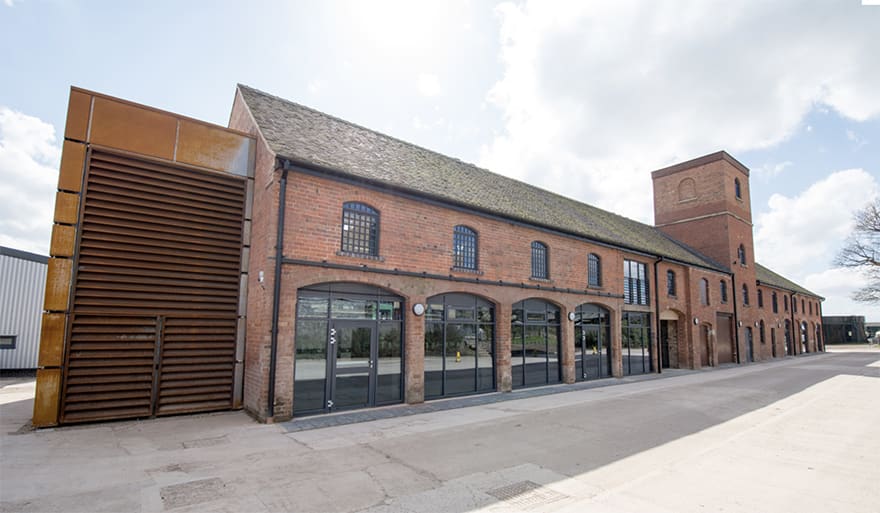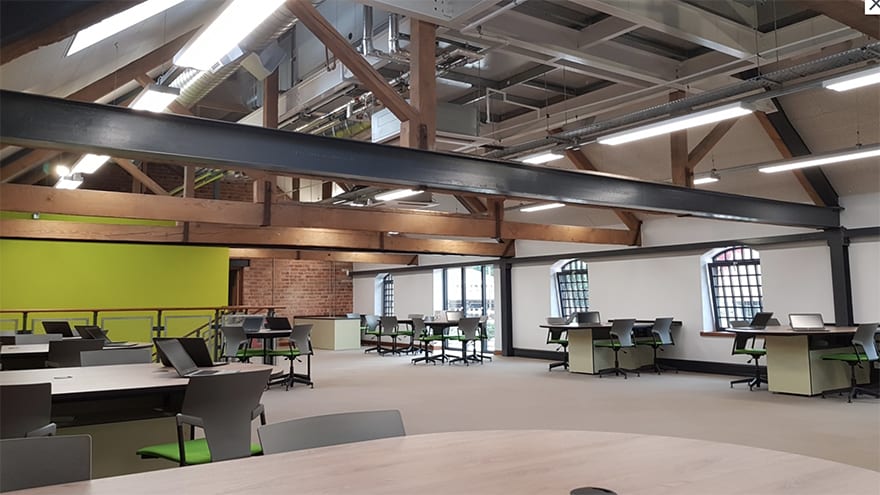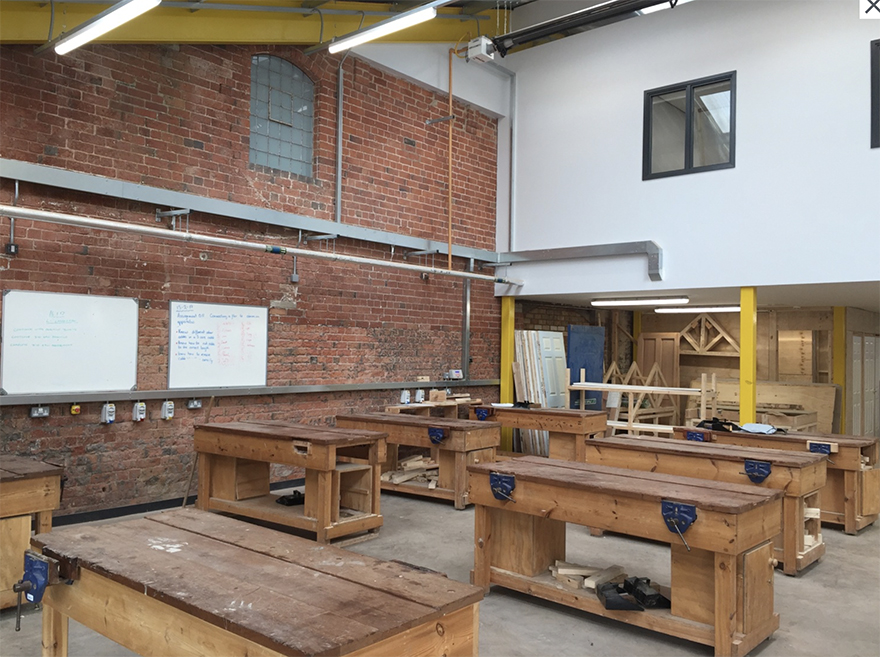- Client: Stoke and Staffordshire Local Enterprise Partnership
- Lead Contractor: Maber (architect)
- BIM Tools: ArchiCAD, BIMx
The AgriSTEM Academy is South Staffordshire College’s centre for training in the advanced manufacturing and engineering (AME) and agricultural engineering and technology (AgriTech) sectors.
Following investment from the Stoke and Staffordshire Local Enterprise Partnership, development of the new academy included a complete renovation of historic granary buildings in addition to extensive new buildings providing 1,000m2 of teaching and workshop space.
The academy features a range of facilities, including an advanced mechatronics lab, agricultural and construction vehicle simulators and renewable energies workshops.
From historic drawings to 3D model
Maber was tasked with designing and refurbishing the buildings for the new academy, with the granary building as the project showpiece.
The project was modelled in ArchiCAD, with one of the biggest challenges being the translation of historic drawings and 2D survey information into an accurate 3D model.
However, the time spent initially modelling the building and producing custom profiles resulted in a high standard of model that could be relied on to carefully meld the old with the new.
A top-to-bottom renovation
Having stood empty for many years, the granary wasn’t structurally safe for educational requirements, nor was it adequately insulated.
Maber needed to increase the thermal performance of the roof which increased its weight. To manage this, the team designed a structural steel frame which was needled into the existing fabric of the building. This involved completely removing the roof, but the contractors kept the original slates and reused them on the front roof slope to maintain the original aesthetic. Heritage roof lights were also incorporated into the design, to bring additional natural light into the building.

The historic granary buildings are the project’s showpiece
By retaining the queen post roof trusses, and adding the steel in parallel, Maber ensured that the new steel did not dominate the exposed ceiling and the building’s original look and feel was preserved.
Robert Fowkes, architectural technologist at Maber, says: “We modelled the steelwork in ArchiCAD and positioned the steel as close as possible to the timber trusses, to minimise the visual impact on the original building. The locations of the trusses and steels were coordinated in ARCHICAD.”
In addition to removing the roof, the contractors also took up the entire floor to underpin the foundations.
“There were a number of recessed brick arches on the ground and first floors which we initially thought could be opened up to add windows for natural light within the space. These were in fact dummy openings and not structural, so we had to work with the structural engineer to design a special steel arch lintel to allow the windows to be incorporated,” says Fowkes.
“ArchiCAD’s renovation filter is ideal for this type of project. We could show which existing elements of the building would stay, which would be demolished, and which would be new – all within the one model. In this way, there is no need to have multiple layers and there is less chance of error.”
Sustainable fabric and materials
As the buildings previously housed pigs and sheep, Maber took a conscious design decision to incorporate agricultural materials into the architecture. The team selected hardwearing materials such as polished concrete. This provided a smooth, level floor that allows equipment on wheels to be moved with ease and is hard enough to cope with the traffic flow of students wearing outdoor work boots.

By retaining the queen post roof trusses, and adding the steel in parallel, Maber ensured that the new steel did not dominate the exposed ceiling

The designers chose sustainably sourced oak for doors, frames, architrave and skirting. These are not primed and painted, so they do not chip, become scuffed or require redecorating. Following a little initial investment at the beginning, the lifecycle costs will benefit the college budget over time.
Fowkes adds: “We were able to assign materials and textures from the interior design scheme directly to the surfaces within ArchiCAD. And by exporting the model into Graphisoft’s BIMx visualisation tool, we could perfectly illustrate the layout and use of the spaces.”
Energy efficiency and conservation
The college strives for a forward-thinking approach to sustainability and renewable energy and Maber always supports this ethos and encompasses it in its designs where possible. An energy dashboard was incorporated to display the development’s energy use to benchmark against good practice.
The granary was thermally upgraded using an insulated fabric that sealed the roof and walls. Foiled tape joints allow for a low target air leakage rate. The floor was removed to install the new steel foundations and provided an ideal opportunity to insulate and add waterproofing to omit any damp in the building.
Maber wanted to maintain the thin lines and proportions of the existing single glazed metal windows. After researching and obtaining samples, the team found a manufacturer that produced a super-thinline profile that gave the thermal performance and conservation style window required.
As bats were known to be nesting on site, throughout the project the team had regular checks with an ecologist to make sure the renovation would not negatively impact on the habitat. For example, the team used a traditional roof membrane to prevent bats from getting their claws stuck. Maber also designed habitation boxes for the bats and faced them with brickwork so they didn’t detract from the original look of the building.
An award-winning building
The client’s brief was to design and deliver an outstanding, award-winning building they could be proud of. Since completion, the building has been recognised in a number of awards including:
- Finalist for LABC West Midlands Building Excellence Awards 2018
- Commended at CIAT Excellence in Architectural Technology 2018
- Finalist for Celebrating Construction Awards West Midlands 2018
- Winner Graphisoft Sustainable Project of the Year 2019













